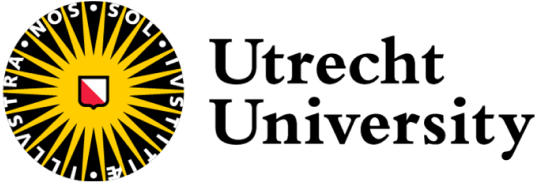Over deze cursus
NOTE: TU/e students can do a 5 ECTS version and WUR students a 6 ECTS version.
The course will take place on location at Utrecht University and is scheduled for the Friday afternoons from 13:15 to 17:00.
Late enrollment can be done by sending an email to: coordinator.nano@uu.nl.
‘Toy models’ are models that use as input (very) simple rules, and as ‘output’ are able to describe a wide variety of (complex) behavior. In this course, some of the most successful toy models will be treated. These models are able to put complex behavior into perspective in terms of generic underlying rules, and have led (and are still leading) to a deeper understanding in biology, chemistry, physics, and technology. Besides that, successful toy models have strong predictive power, and often have significant impact beyond the disciplinary boundaries for which they were originally designed.
The course consists of the following subjects:
Introduction to the Ising model and its applications in one, two and three spatial dimensions: from ferromagnets and the gas-liquid transition to the helix-coil transition of biopolymers. Role of order parameters and universality. Setting up the partition function, exact calculation in one dimension and mean-field approximation in arbitrary dimensions. Calculation of the equation of state, the critical point and critical exponents, evaluation of correlation functions and the role of spontaneous fluctuations in destroying order. (Paul van der Schoot)
Coupled differential equations and nonlinear dynamics. Topics include bifurcations and tipping points, competition between species (Lotka-Volterra), delay differential equations, and genetic transcription circuits. Tools: qualitative theory of ordinary differential equations, linear stability analysis. Poincaré-Bendixon theorem. (Jasper Landman)
The ‘random walk’ and applications in diffusion, polymer statistics and rare events. Tools: basic statistics. (Willem Kegel)
Random adsorption models. Fundamentals, MWC theory of allosteric interactions, simple genetic repression and activation. Tools: grand ensemble theory; undetermined multiplier method of Lagrange. (Willem Kegel)
This is a multidisciplinary course that can be relevant for students of natural science, life science, technology, and mathematics, who are interested (and preferably have some background) in quantitative models.
The following courses can provide appropriate background:
At UU : Wiskundige technieken (NS-120B, 121B,NS- 220B or SK-BWS2-13, SK-BWIS3); Thermische fysica, Fysische chemie 2/3 (SK-BFYCH, SK-BFYC3 or NS-204B,NS-370B)
At TU/e: Thermal Physics, Calculus, Biological Physics, Physical Chemistry, Modelling and Simulation at the Bio-Molecular Scale, Advanced Calculus for Chemical Engineering and Chemistry, Advanced Thermodynamics and Kinetics, Molecular Cell Biology
At WUR: Physics for Life Sciences (BIP10803), Physics MLS (BIP10303), Introductory thermodynamics B (PCC23303), Statistical Thermodynamics (PCC34303), Physical Chemistry for Food Scientist (FPH10803, Advanced Food Physics (FPH30306), Driving Forces in Chemistry, Physics and Biology (PCC22306), Advanced Soft Matter (PCC31806), Mathematics 1,2 (MAT14803, MAT14903).
Feedback, evaluation and assessment
Assessment is based on a written exam (50%) with open questions, as well as take-home group-based assignments (50%) that, depending on the number of students in the course, may include a presentation to the class. Time slots in the schedule are dedicated to working on the take-home assignments, where the course teachers will be available for questions and feedback.
There is no minimal grade for assignments and final open question part of the exam. If the average grade <5.5, the student is entitled to a retake of the final test with either 100% weight, or the same weight as the first test to be averaged with the original grade of the take-home assignments.
Leerresultaten
After this course master students of natural science and life science are able to do basic calculations using the most prominent toy models in biology, chemistry and physics. Moreover, students are able to transform complex problems into the simple mathematical rules that serve as input in these models.
Voorkennis
No explicit courses, but a firm background in mathematics at least level 2 (level 3 is preferred), general physics level 2, statistical mechanics and thermodynamics at least level 2 (3 is preferred), basic (level 1) molecular biology is recommended (but not required).
Bronnen
- Handouts Handouts will be provided
Aanvullende informatie
- Meer infoCursuspagina op de website van Utrecht University
- Neem contact op met een coordinator
- StudiepuntenECTS 7.5
- Niveaumaster
